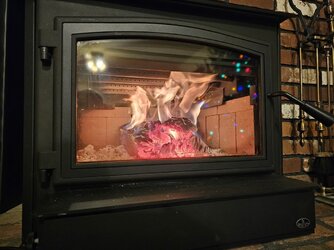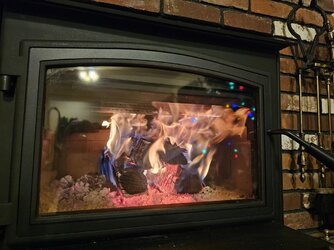I have planted a lot of oaks in key positions on my property, where other things had died a decade ago. I'm really hoping these don't get wiped out, as well.
But you guys lamenting one having to use oak as firewood? Get your heads checked! Oak is the ultimate firewood, for anyone who has time to let it properly dry! Massive BTU punch, and easy to maximize burn times, no matter what your rig.
Oak is the ultimate firewood, for anyone who has time to let it properly dry! Massive BTU punch, and easy to maximize burn times, no matter what your rig.
But you guys lamenting one having to use oak as firewood? Get your heads checked!
 Oak is the ultimate firewood, for anyone who has time to let it properly dry! Massive BTU punch, and easy to maximize burn times, no matter what your rig.
Oak is the ultimate firewood, for anyone who has time to let it properly dry! Massive BTU punch, and easy to maximize burn times, no matter what your rig.





 Closing the air all the way and closing the flue damper calmed things down in a couple minutes. I closed it off on today's load once the fire was fully engaged. It does add an extra margin of control.
Closing the air all the way and closing the flue damper calmed things down in a couple minutes. I closed it off on today's load once the fire was fully engaged. It does add an extra margin of control.